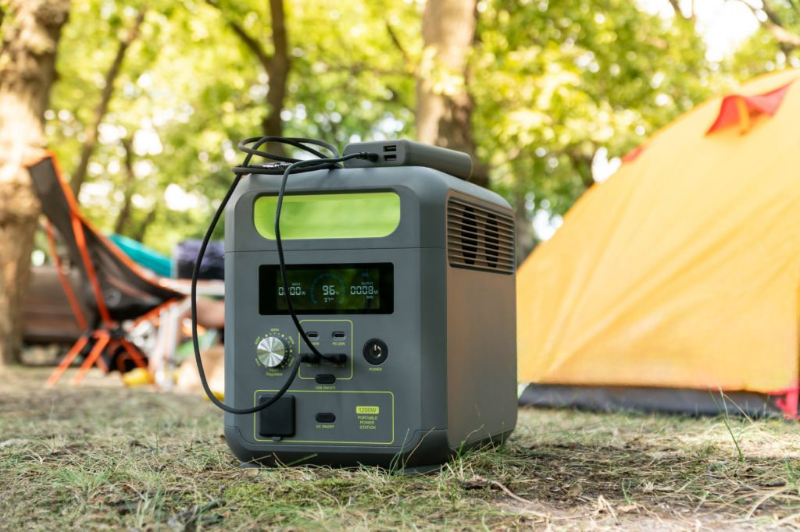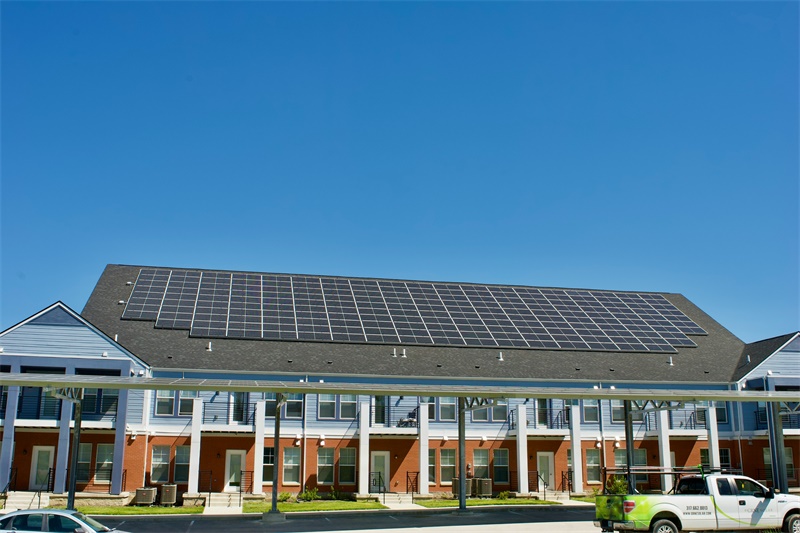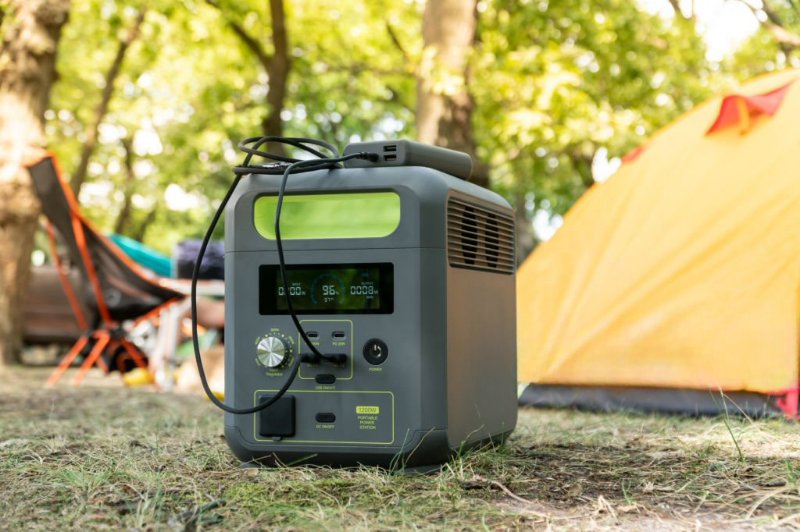What Is an Outdoor Power Station?

What Is an Outdoor Power Station?
An outdoor power station is a versatile portable power supply equipped with built-in lithium-ion batteries capable of storing electrical energy. Also known as a portable energy storage device, it functions like a compact, portable charging station. It features lightweight design, large capacity, high power output, long lifespan, and strong stability. Outdoor power stations provide multiple output options, including DC and AC power, to supply energy to laptops, drones, photography lights, projectors, rice cookers, fans, kettles, vehicles, and more. They are ideal for power-hungry scenarios such as camping, outdoor live streaming, fieldwork, on-location shooting, and home emergency power backup.
This article will explain how outdoor power stations work, their typical applications, and key factors to consider when choosing one.
Difference Between Outdoor Power Stations and Mobile Power Banks
There is a significant difference in output capability between outdoor power stations and mobile phone power banks.
Mobile power banks typically connect via Type-C or other data cables to charge smartphones, offering around 10,000 to 30,000 mAh of power.
In contrast, outdoor power stations support AC output through household sockets and can power appliances with kilowatt-level consumption, which mobile power banks cannot. Outdoor power stations are versatile, suitable for home use as well as various outdoor settings, and can power high-wattage devices such as electric grills, fans, portable refrigerators, and air conditioners.
Difference Between Outdoor Power Stations and Generators
Though both devices provide power, outdoor power stations and generators differ greatly in fuel, power source, noise, and usage:
Outdoor power stations store electrical energy in batteries, while generators typically use gasoline to generate power. Outdoor power stations can be recharged via solar panels; generators cannot.
Generators usually offer higher power output, but high-end outdoor power stations can match generator power.
Outdoor power stations operate quietly, whereas generators produce significant noise.
Outdoor power stations produce no exhaust and are safe for indoor and outdoor use. Generators emit exhaust gases and are unsafe indoors.
Outdoor power stations require minimal maintenance—charging every six months to keep 60%-80% capacity and storing in a ventilated, cool, dry place. Generators require fuel removal if unused for over 30 days to prevent fuel degradation and clogging.
How Outdoor Power Stations Work
An outdoor power station consists of a control board, battery pack, inverter, and battery management system (BMS). It converts DC power stored in the battery to AC power for appliances and supports multiple DC output ports for charging various devices.
Common Use Cases for Outdoor Power Stations
Powering RVs
Placing an outdoor power station in an RV allows the use of most household appliances like rice cookers and electric kettles. Connecting to the vehicle’s power socket lets you store and use energy for extended periods.Camping and Outdoor Activities
Outdoor power stations solve power shortages during camping or outdoor events—charging phones, cooking meals, playing music, and powering electric grills, fans, portable refrigerators, air conditioners, cameras, drones, and lighting equipment. They are also useful for outdoor vendors, live streaming setups, and fieldwork like mining, oil fields, geological surveys, disaster rescue, and telecom emergency repairs.Emergency Backup During Power Outages
Outdoor power stations serve as emergency power sources during blackouts, enabling lighting, heating with electric blankets, cooling with fans or air conditioners, boiling water, and heating food with microwaves to maintain daily life.Integration with Solar Panels
Connecting outdoor power stations to solar panels enables storing solar-generated electricity for clean, off-grid power supply.
Outdoor Power Station Lifespan
Typical lifespan ranges from 500 to 2,500 charge-discharge cycles (one full charge and discharge counts as one cycle). Actual life varies based on usage and environment.
How to Choose the Right Outdoor Power Station
- Select Battery Capacity (Wh) Based on Usage
| Usage Scenario | Recommended Capacity (Wh) |
|---|---|
| Remote Outdoor Work | 350 Wh or more |
| Camping | 500 Wh or more |
| Running Small Appliances (fridge, rice cooker) | 600 Wh or more |
| Emergency Backup | 1,000 Wh or more |
Choose Pure Sine Wave Output
Pure sine wave output resembles household electricity and supports a wider range of sensitive devices. Modified square wave output is not recommended for gaming consoles or personal computers.Consider Output Port Types and Quantity
| Port Type | Suitable For |
|---|---|
| AC Outlets | General electrical appliances |
| Type-C, USB Ports | Smartphones, laptops |
| Car Charger, DC Output | Vehicle electrical devices |
Summary
Outdoor power stations with large-capacity lithium batteries provide higher capacity and output than mobile power banks. They support solar charging and are excellent solutions for outdoor use and emergency power needs.
If you need further customization or a more concise version, feel free to ask.
 Adventure Ready Portable Solar
Adventure Ready Portable Solar
 Best Solar Panels for 4WD Adve
Best Solar Panels for 4WD Adve
 What Is an Outdoor Power Stati
What Is an Outdoor Power Stati
 How to Choose the Right Voltag
How to Choose the Right Voltag




